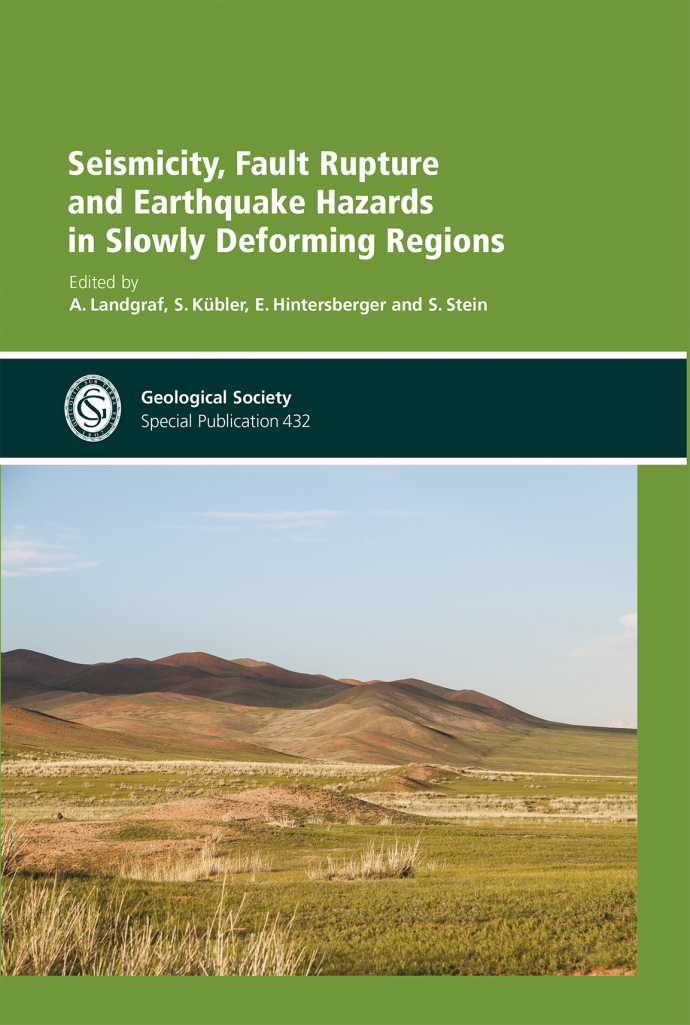Stefano GoriAll rights reserved
Our colleague Lucilla Benedetti (CEREGE, France) distributed the following call for papers on the recent earthquake series in Central Italy:
Dear Colleagues,
We would like to invite contributions to a special volume entitled « The 2016 Central Italy Seismic Sequence: Insights, implications and lessons learned » that will be published in Tectonics AGU journal (details here).
more
It is time for the monthly list of papers that could be interesting for the earthquake geology community. Lots of new papers this time, and too many different topics to list them in detail. Enjoy reading! more

It’s a book!
Sometimes, things need time to evolve. And when they finally arrive, all laborious work and cumulated frustration is almost immediately forgotten in a flash of joy, a little bit of pride, and a lot of relief. What sounds pretty pathetic here is a summary of the process that lead to the recent Geological Society of London Special Publication 432: Seismicity, Fault Rupture and Earthquake Hazards in Slowly Deforming Regions. While we will mostly advertise the volume, which should be of broad interest to the Paleoseismicity community (so please buy it, like it, share it!), we would also like to share some thoughts about why four years passed between submission of the volume proposal at the end of 2012 to seeing the book finally in the shelf at the beginning of 2017. more
Martin LuffCC BY-SA 2.0
Now that the new dates for the 8th PATA Days 2017 in New Zealand are fixed, it is time to bring to your attention an exceptional paper that was already published in 2016. I planned to write a review long time ago, but I just managed to do so now. The paper by Quigley et al. is not only likely to become your favourite read during the long flight to New Zealand, but it will also serve as an extremely valuable contribution to the study of earthquake environmental effects (EEEs) in general. The authors report on, and summarise, the effects that the 2010-2011 Canterbury earthquake sequence had on the environment. The paper is special in many ways: more
In microtidal seas such as the Mediterranean (tidal range ≈0.4 m sea-level indicators are commonly used to infer coseismic history. A list containing these indicators is long, including wave-cut platforms, marine terraces, displaced beach rock, biological agents, sedimentological and stratigraphical indicators, and archaeological indicators. Obviously, the trustworthiness varies a lot from one to another. For deriving late Holocene coastal tectonic activity, one of the most commonly used sea-level marker activity are tidal notches. These form distinct morphological and ecological erosional features developed within the tidal range [Pirazzoli, 1986; Antonioli et al., 2015]. more
The “Great 1117 Veronese Earthquake” was one of the strongest events that hit Northern Italy in historical times. Many aspects of this earthquake are still debated, but archaeological sources, historical archives, and geological records can help to better understand what had happened near Verona 900 years ago. On 20 January, 2017, a conference on the 1117 Veronese Earthquake took place in Venice, bringing together archaeologists, historians and earth scientists. The presentations were given in Italian, but Paolo Forlin from the Armedea project provides an English summary of the meeting. Read his highly interesting article here. more
The FAULT2SHA Working Group has been formally approved by the European Seismological Commission, at the 35th General Assembly in Sept 2016. The WG core supporters are pleased to announce a new initiative, open to all researchers interested in contributing to discussions on topics that could improve the assessment of seismic hazard. more
Sakurai MidoriCC-BY-SA-2.0
The Joint Scientific Assembly of the International Association of Geodesy (IAG) and International Association of Seismology and Physics of the Earth’s Interior (IASPEI) will be held in Kobe, Japan from 30 July – 4 August, 2017. Among the scientific sessions, there will be an IASPEI Symposium on paleoseismology and paleotsunami studies.
more
This year has already seen a good amount of publications that might be interesting for the paleoseismicity community. Since it’s still rather unpleasant outside (at least here in the UK), why not lean back in your comfy chair, drink a cup of tea and read some exciting new science? Today we have interesting papers on old earthquakes, seismic hazard, paleoseismology, speleoseismology, the ESI-scale, fault physics, tsunamis, and space geodesy. Plus, tectonic lunomorphology – fault scarps on the moon. Enjoy reading! more
Kate ClarkAll rights reserved
We are pleased to announce new dates for the 2017 PATA Days Meeting: Monday 13th – Thursday 16th November, 2017.
The meeting will be held in Blenheim, at the top of the South Island, at the northern end of the Marlborough Fault System and 30 km above the southern Hikurangi subduction zone. The first full day of the meeting will be a field trip to view some of the northern fault ruptures of the 2016 Kaikoura earthquake. This will be followed by three days of talks and presentations at conference venues in Ward and Blenheim. Meeting attendees are advised to arrive in Blenheim by the 12 November, and to arrange accommodation in Blenheim for 5 nights (12 – 17 November). There will also be an optional post-meeting field trip from Friday 17 – Sunday 19 November. The post-meeting field trip will start in Blenheim and finish in Christchurch. The meeting is supported by INQUA and the main annual event of the IFG EGSHaz.
We look forward to welcoming you to New Zealand and sharing some science from our recently very active plate boundary. Find more information at the official conference website: https://www.gns.cri.nz/Home/News-and-Events/Events/PATA more

